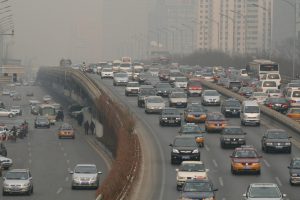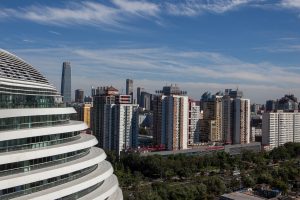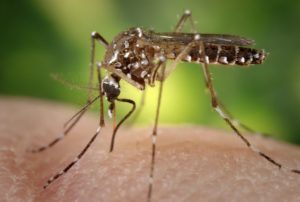Much of northern China has been shrouded in heavy smog since the beginning of December, prompting nine cities to issue red alerts, and affecting at least another 50 cities across seven provinces.
This latest smog attack triggered the first use of the so-called unified warning system by the local governments in China’s national capital region, which includes Hebei province and the municipalities of Beijing and Tianjin.
Also see: Pressure build to fight smog in Western China
The system, announced in October, is designed to unify the grading standards for heavy pollution warnings and tighten the rules on pollutant emissions.
On Saturday, December 3, the air quality index (AQI) in the northern Chinese city of Shijiazhuang, Hebei province, exceeded 500 — the maximum reading — and remained there until Monday.
According to US Environment Protection Agency standards, AQI levels above 150 are considered unsafe.
A time-lapse video showing pollution in Shijiazhuang through a 72-hour period. By Quan Yi
Shijiazhuang is one of the most severely polluted cities in China. From Friday, the AQI rose steadily from around 100 to 500 in three days’ time, and measurements of PM 2.5 – small pollution particles that are especially harmful because they can enter the bloodstream – were as high as 736 micrograms per cubic metre.
By comparison, the highest AQI recorded in Beijing over the same 72-hour period was 454, and the highest PM 2.5 reading was 431, according to Aqistudy.cn, a weather data website operated by a non-governmental organisation.
Shijiazhuang was among the 10 most polluted cities in China in 2015, according to the country’s Ministry of Environmental Protection. In 2013, the city had 322 days of polluted air, and it remained atop a list of cities with poor air quality for a staggering 11 months, according to statistics from the China Meteorological Administration.
Shijiazhuang’s energy-intensive industries are to blame for its unenviable reputation, says Wang Luguang, chief engineer of Hebei’s Environmental Protection Agency. According to public data, the burning of fossil fuels, especially coal, accounts for up to 70% of the city’s air pollution. Additionally, a three-year urban renovation project begun in 2008 resulted in massive construction sites that produced vast clouds of dust. The rapid growth of car ownership in Shijiazhuang is another factor that has contributed to the city’s pollution, Wang says.
The poor air quality has also led to an increase in hospital visits, especially from children, many of whom have developed pneumonia, according to local media reports.
It appears the smog blanket is now spreading to other parts of the country. More than 20,000 travellers were delayed at Chengdu Shuangliu International Airport in southwestern Sichuan province on December 4. Meanwhile, all schools in Shanghai suspended outdoor activities on December 5, when AQI readings in the city reached 227.
This article was originally published by the Sixth Tone.








![Biomass burning is a major source of air pollution. [photo by Ahron-de Leeuw]](https://dialogue.earth/content/uploads/2016/12/Varanasi-ghat-Ahron-de-Leeuw-300x199.jpg)